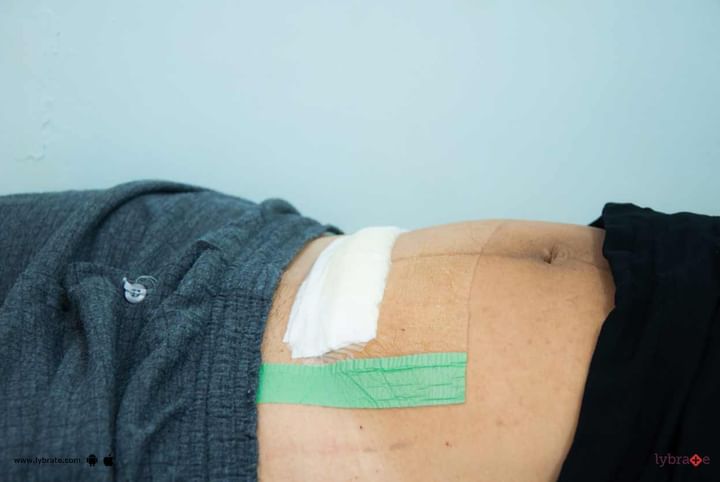C-Section Stitches - Ways To Deal With Them!
Caesarean-section or C-Section is fairly common today and most mothers do not realize that once their incision has healed completely, the scar tissue problems can still occur. Unfortunately, there are no instructions for how to heal and care for C-section scars after they go home. The general post-operative instructions from hospital include a list of activities to avoid like lifting heavy articles and driving.
Caesarean scars can cause pain well after they've healed. This happens at the site of incision, but in other areas as well. It's important to remember that the scar you see on a mother's lower abdomen is just one spot that scar tissue has formed. There are also internal scars which can spread throughout the body over a time period. This scar tissue can cause lingering pain and dysfunction well after delivery.
When our body tissue get damaged, scar tissue forms. After a C-section, scar tissue forms along the abdomen and uterus as part of the natural healing process.
Caesarean scars can be painful and mothers feel pain or tightness in their scars when they are reaching, leaning, lifting or standing up straight. The scar can cause muscle, connective tissue, and nerve damage in areas adjacent to scarred area. Over time this can lead to pelvic pain, bowel problems like constipation and irritable bowel syndrome and painful sex.
C-section scars are typically located in an area where they can entrap nerves. This can cause pain and also create an urgency or frequency to urinate. The best thing for a new mother is rest and recovery and doing too much, too soon, after a caesarean is a health risk. It is important that to keep the incision clean, eat well and avoid lifting heavy articles to support healing.
It is recommended that mothers have lymphatic and myofascial massage two days prior to surgery and as soon as possible post-surgery. Lymphatic massage is a light massage assisting in drainage and allows the collagen to align with the incision.
At three months post-caesarean mothers can begin scar tissue release therapy that involves massaging of the scar tissue so it becomes softer and more flexible like the surrounding skin and internal tissues. It needs to be done with three dimensional focus, slowly and gently separating the adhered tissues in all directions. The scar tissue release therapy painful with a burning sensation for some mothers, while some only feel mild discomfort or no pain at all.
Regardless of the age of the scar, one could get benefits from scar tissue release therapy from injuries to burns to surgical scars. Surface and internal scarring from surgeries could be contributing to many of the issues. Sometimes scarring is just a piece of the puzzle of your pain and so a pelvic floor physiotherapy in addition to scar tissue release therapy is recommended. The scar tissue release therapy reduces the appearance of C-section scars. It softens tissues and increases circulation, which all lead to a lightening in colour of the C-Section scar.
Here are five suggestions to speed up your recovery so you can spend less time sore and tired, and more time bonding with your new baby:
- Get Plenty of Rest: A C-section is major surgery. Just like with any other surgery, your body needs time to heal afterward. Expect to stay in the hospital for three to four days after your delivery (longer if there are complications), and give your body up to six weeks to fully heal.
- Baby Your Body: Take extra care in getting around while you heal. Avoid going up and down stairs as much as you can. Keep everything you need, like diaper changing supplies and food, close to you so that you don’t have to get up too often. Don’t lift anything heavier than your baby.
- Relieve Your Pain: Ask your doctor what pain medicines you can take, especially if you’re breastfeeding. In addition to pain medicine, you can use a heating pad to relieve discomfort at the surgical site.
- Focus on Good Nutrition: Good nutrition is just as important in the months after you deliver as it was while you were pregnant. If you’re breastfeeding, you’re still your baby’s primary source of nutrition. Eating a variety of foods will keep your baby healthy and help you get stronger.
In case you have a concern or query you can always consult an expert & get answers to your questions!



+1.svg)
